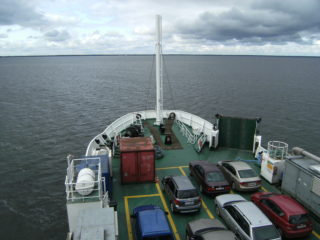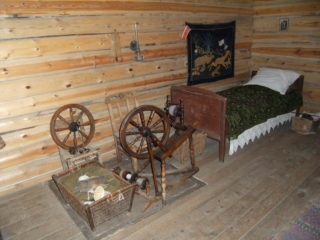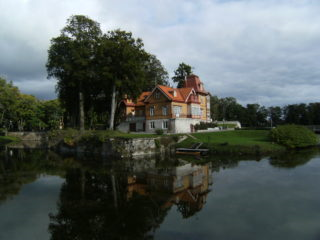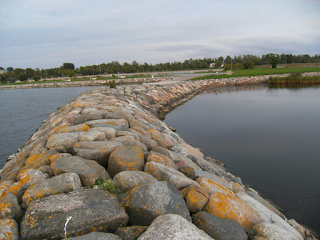An Island Escape: A Whirlwind Tour of Western Estonia
For a change of pace from the daily grind, we swapped our office chairs for bus seats and embarked on a brilliant corporate weekend trip to the enchanting Estonian islands! The mission was simple – relax, have a laugh with colleagues, and explore the unique landscapes of western Estonia. Our main destination was the captivating Saaremaa island, with a brief pitstop in Estonia’s delightful summer capital, the town of Pärnu.
A Border Crossing with a Twist
The main E67 road offers a straightforward route from Latvia into Estonia, but we discovered a far more charming alternative. Just before the official border, take a left turn into the sleepy Latvian town of Ainaži. As you meander through its quiet streets, keep your eyes peeled – you’ll be pleasantly surprised when a simple road sign casually announces you’ve already crossed the state border!
Right before this unassuming crossing, there’s a small parking spot. It’s well worth pulling over for a short stroll to the old mole, which sits in Latvia just a few hundred metres from Estonia. The reward is a beautifully serene coastal landscape, a perfect, peaceful start to the adventure.
Pärnu: The Summer Capital Winding Down
Our next proper stop was Pärnu (to be honest, the journey there was mostly pine forests and glimpses of the Riga Gulf, still a fair distance from the E67). We were visiting right at the tail end of summer and the weekend, and the town was incredibly tranquil. Many of its famous cafes and restaurants were either closed or sitting empty, enjoying a well-earned rest.
Despite the quiet, Pärnu is a lovely town, particularly its picturesque old quarter, which is perfect for a leisurely wander. If you’re driving from Riga to Tallinn, it remains a fantastic spot to break up the journey, grab a excellent coffee, and stretch your legs before tackling the final 130 kilometres north to the Estonian capital. We did just that before pressing on towards the islands.

All Aboard for the Islands!
Saaremaa, Estonia’s largest island, is accessible via a regular ferry service from the mainland. The terminal is in the tiny village of Virtsu, and the ferry docks in Kuivastu on Muhu island – a smaller island you cross to reach Saaremaa itself.
The crossing is a quick and scenic 25-minute hop, just enough time to pop upstairs to the ferry’s café for a refreshing local beer and a snack. During peak hours, a ferry departs every 35 minutes. As you sail, remember you’re crossing a significant stretch of water. Saaremaa forms the main natural barrier between the Gulf of Riga and the open Baltic Sea.
The Timeless Charm of Muhu Island
After docking in Kuivastu, don’t rush off! A short detour off the main Kuivastu-Kuressaare road leads you to Koguva village, a perfectly preserved 19th-century Estonian settlement. It’s an absolute time capsule. Wandering among the traditional living and farmhouses, storehouses, saunas, and barns, some dating back to the 18th century, you get a profound sense of what life was like here centuries ago.

The Wild Beauty of Saaremaa
Sprawling across 2,700 square kilometres, Saaremaa is a world of its own. Its villages are dotted with charming stone fences and beautiful houses sporting traditional thatched roofs. The island’s symbols are its iconic windmills, fragrant junipers, and famously hearty home-brewed beer.
One of the most thrilling sites is the Kaali meteorite crater field. Formed by a cataclysmic impact around 650-700 BC, the largest crater is an awe-inspiring 110 metres in diameter and 22 metres deep. It’s incredibly easy to find; just follow the clear road signs about 18 kilometres from Kuressaare on the road to Kuivastu.

Kuressaare: The Island’s Historic Heart
Our final stop was Kuressaare, the one and only town on Saaremaa and its undisputed capital. The star attraction, and the absolute highlight of the town, is the magnificent Episcopal Castle.
Built in the late 14th century, this formidable square fortress is one of the best-preserved medieval castles in the entire Baltic region. Walking its grounds is a truly exciting step back in time.
A quick note on accommodation. Saaremaa is known for its comfortable, modern Spa hotels. You can expect lovely pools, saunas, and bars. A word to the wise for those visiting in the shoulder seasons: in early autumn, the heating might not yet be fully operational, and the thin walls are better at keeping in the spa vibe than the cold or noise!
All in all, it was a fantastic whirlwind tour – a perfect blend of history, nature, and camaraderie that left us all thoroughly refreshed.
